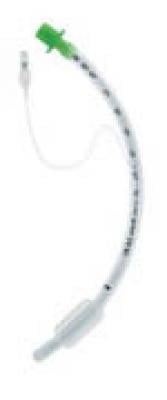
In November 2007 Kimberly-Clark launched its MICROCUFF Endotracheal Tube, an airway management device designed to reduce the leakage of potentially infectious secretions into the lungs.
The company said its excellent sealing capability of the MICROCUFF Endotracheal Tube is created by its unique cuff made with an advanced micro-thin polyurethane material. While conventional PVC cuffs create folds and channels when inflated which allow fluid to leak past the cuff, the cuff on the MICROCUFF minimizes those channel openings and creates an effective tracheal seal. The cuff length and shape of MICROCUFF tubes are also designed for better contact with tracheal contours to increase protection against fluid leakage.
Long-term tube placement can sometimes expose patients to additional risks of trauma to airway tissues. The MICROCUFF seals the airway at low pressures, reducing the risk of tracheal trauma in intubated patients.
The leakage of secretions past the cuff, or micro-aspiration, is considered a leading cause of ventilator-associated pneumonia (VAP). Approximately 8-28 percent of critical care patients on mechanical ventilators develop VAP and hospital-associated pneumonia patients have a mortality rate of 20-33 percent. VAP increases patient time in the ICU by four to six days and adds an average cost of $20,000-$40,000 per incident
April 2008

